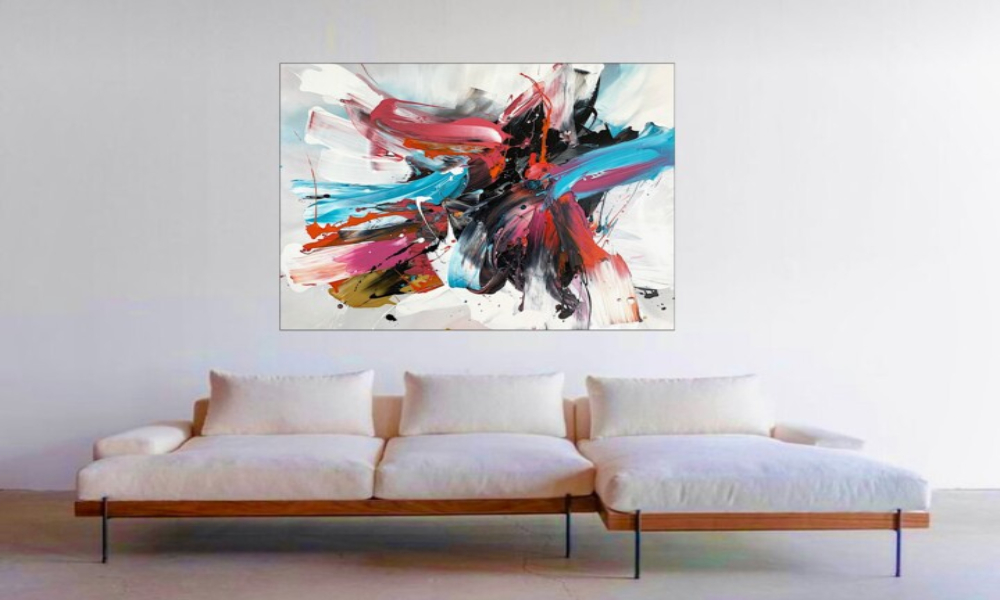In the dynamic world of interior design, art installation has emerged as a pivotal element that transforms spaces beyond mere aesthetics. Art installation, with its ability to create immersive experiences and evoke emotional responses, is redefining how we perceive and interact with interior environments. This article explores the profound impact of art installation on interior design, highlighting its role in elevating spaces and enhancing the overall experience.
The Evolution of Art Installation in Interior Design
Art installation has evolved from traditional wall art and sculptures to a versatile and interactive medium that integrates seamlessly into interior spaces. Historically, art was often confined to galleries and museums, but contemporary interior design embraces art installation as a fundamental component of space planning and decoration. This shift reflects a growing appreciation for art as an integral part of daily life, influencing the ambiance and functionality of residential, commercial, and public spaces.
Creating Immersive Experiences
One of the most compelling aspects of art installation is its ability to create immersive experiences. Unlike traditional art forms that are often observed from a distance, art installations engage viewers on a sensory level, inviting them to interact with and become part of the artwork. This interactive quality can transform a room into a narrative environment, where the boundaries between art and space blur. For instance, large-scale installations that incorporate elements like light, sound, and texture can envelop a space, offering a multi-dimensional experience that enhances the atmosphere and emotional impact of the environment.
Enhancing Aesthetic Appeal
Art installation significantly enhances the aesthetic appeal of interiors by introducing unique and often unexpected elements. Unlike conventional decor, which may rely on uniformity and predictability, art installations bring a sense of individuality and creativity to a space. This can be particularly effective in commercial settings, such as hotels, restaurants, and corporate offices, where art installations can create a memorable impression and contribute to the overall branding and identity of the space. For example, a bespoke art installation in a hotel lobby can set the tone for guests’ experiences and establish a distinctive character for the establishment.
Reflecting Personal and Cultural Identity
Art installations offer a powerful way to reflect personal and cultural identity within interior spaces. In residential design, homeowners can use art installations to express their tastes, interests, and values, making their living spaces a true reflection of who they are. Similarly, businesses and public institutions can use art to convey cultural significance and foster a sense of connection with the community. Custom art installations that incorporate local themes, historical references, or cultural symbols can create a meaningful dialogue between the space and its occupants, enhancing the sense of belonging and engagement.
Integrating Art Installation with Functional Design
Modern interior design often seeks to balance aesthetic appeal with functionality, and art installation can play a crucial role in this integration. Innovative designers are exploring ways to merge art with practical elements, such as lighting fixtures, furniture, and architectural features. For instance, an art installation that doubles as a functional partition or lighting element can contribute to both the visual and practical aspects of a space. This approach not only maximizes the utility of the installation but also ensures that art serves a purpose beyond decoration.
The Impact on Well-being and Mood
The presence of art installation in interior spaces can have a profound impact on occupants’ well-being and mood. Studies have shown that exposure to art can reduce stress, improve mental health, and enhance overall quality of life. Art installations that are thoughtfully designed and strategically placed can create calming environments, stimulate creativity, and foster a positive atmosphere. For example, art installations in healthcare settings, such as hospitals and clinics, can provide a soothing and uplifting experience for patients and visitors, contributing to a more supportive and healing environment.
Conclusion
Art installation is redefining the boundaries of interior design by transforming spaces into immersive, aesthetically compelling environments that reflect personal and cultural identities. Its ability to create interactive experiences, enhance aesthetic appeal, and integrate with functional design elements makes it a powerful tool for designers seeking to elevate the quality and impact of interior spaces. As art installation continues to evolve and gain prominence in the world of interior design, it offers endless possibilities for creating transformative spaces that resonate with beauty, meaning, and functionality.

